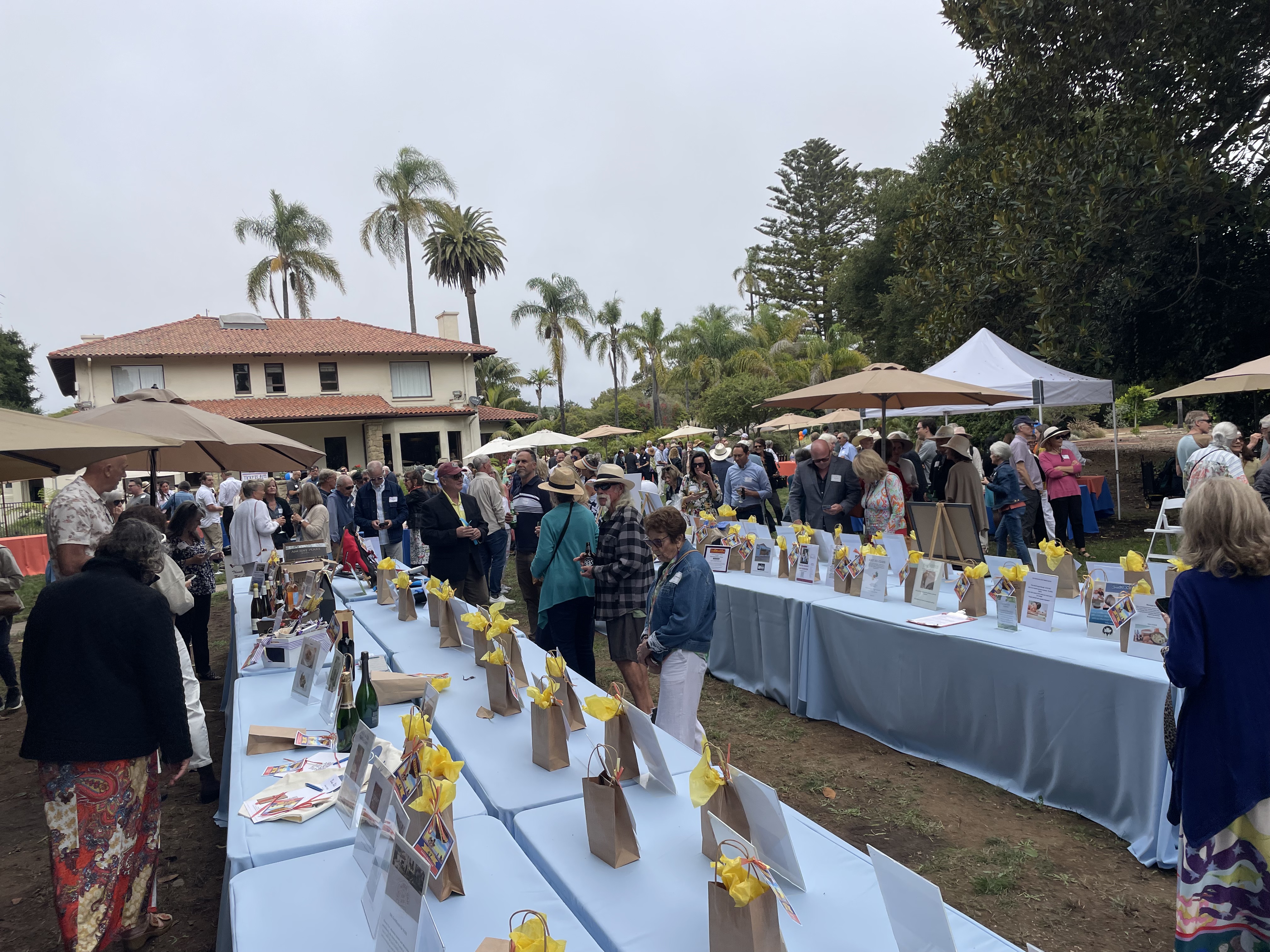S.B. Rescue Mission Hosts Fundraiser for Its Shelter and Recovery Programs
City Housing Authority CEO Rob Fredericks Honored

On October 5, the Santa Barbara Rescue Mission (SBRM) hosted its annual Bayou celebration at Dos Pueblos Ranch, raising $600,000 for its Homeless Guest Services Program and its Residential Treatment Programs. The former provides critically important shelter, meals, and more to homeless individuals; the latter transforms lives with treatment programs that have success rates far exceeding national averages.
A joyous spirit permeated the crowd of 316 supporters, who are drawn to the nonprofit because of the tremendously positive impact its work has on some of the most vulnerable members of our community. Among the supporters were many Women’s Auxiliary members, who put on the event each year and assist the SBRM year-round.
After an extended reception, guests were seated for a late afternoon dinner and welcomed by President Rolf Geyling, who praised the event honoree, Housing Authority of the City of S.B. Executive Director and CEO Rob Fredericks, for his agency’s provision of housing to vulnerable populations. Calling Fredericks compassionate, innovative, and committed, Geyling related how under Fredericks’s leadership since 2016, the Housing Authority has provided 1,600 affordable homes and 3,000 vouchers to low-income residents.
Transition House Executive Director Kathleen Bauschke delivered a touching tribute to Fredericks. In accepting the honor, Fredericks lauded SBRM, which “provides something equally vital” as his agency does, “a safe refuge for those in need, paired with transformative programs that offer individuals the tools to rebuild their lives. Together, we are community builders and, quite literally, life savers. We are here to support those who need us most, providing not only shelter, but hope and a path to a better life.”
In addressing supporters, Geyling emphasized that for the critically important community services SBRM provides on its $4 million annual budget, it receives no public funding. “Simply put, we won’t be able to turn on the lights this evening, unless someone gives us a dollar to do so.”
Homelessness must be viewed as a problem of human beings struggling, Geyling pronounced, and people of faith and compassion are compelled to respond. What’s more, he noted, SBRM has been going beyond providing food and shelter, addressing the complex circumstances individuals face.
In an interview, Geyling explained that under its Transitional Shelter Pilot Program (TSP), launched last year, SBRM has been providing focused case management and a more stable environment to some shelter clients, allowing them to remain on-site during the day. Especially for those with infirmities, Geyling noted, there is a humane need to not leave them to struggle on the street. Previously, all shelter clients had to exit for the day after breakfast.
Of the 117 individuals who entered the program last year, 58 have exited to positive placements: permanent housing, a recovery program, or an appropriate care facility. The program addresses a common challenge, Geyling related, of going from the street to being ready for a recovery program. Just two weeks of monitored care has increased the participant’s ability to engage in a recovery program.
In light of this success, SBRM is doubling its case management staff of two and opening the program to anyone in the shelter who wants to participate. According to Geyling, “The more contact we can give individuals with caring case managers who work in concert with other providers, the more helpful we will be.”
Turning in his remarks to treatment programs, Geyling noted the dismal success rate of programs nationally, with only one in five people who start completing them; and of those who do complete, only one in five maintain recovery for at least five years. In SBRM’s programs, Geyling shared, participants are able to stabilize over a generous 12-month period, while surrounded by people of faith, compassion, and clinical expertise. The results are remarkable: a graduation rate of 41 percent, and a five-year-out recovery rate of 63 percent. SBRM also boasts incredible employment rates, with 100 percent employment for last year’s graduates. Begun in 1997, the Residential Treatment Programs this year had their 1,000th graduate.
Immediate past board president Joyce McCullough made the pledge appeal, noting the effectiveness of the treatment programs, whose staff include many program graduates with a keen understanding of the issues participants face. She pointed also to the cost effectiveness of the nonprofit’s programs, which are 85 percent less than the national average. A residential treatment program graduate, now a Cal Poly student, shared his courageous, moving story of addiction and recovery thanks to SBRM.
SBRM provides food and shelter 365 nights a year, last year providing 58,897 nights of shelter and 111,170 meals. Its Men’s Residential Treatment Program, for the 12 months ending September 2024, enrolled 48 men and had a whopping 25 graduate. The Women’s Treatment Program had 45 intakes and a lesser number, but still quite impressive, of 15 graduates, with their lives transformed.







You must be logged in to post a comment.